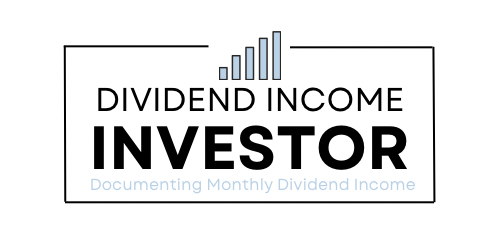Annual revenue – My dividend business has 19 stocks that pay dividends. Here’s an overview of my porfolio and how much income is expected.
Any dividend investor would tell you dividend investing is similar to entrepreneurship.
Essentially, dividend investing involves managing risk and trying to increase annual income like a business.
As such, I treat my investment portfolio as if it’s a business.
Each month I publish dividend income updates to document how much income was earned.
Also, I publish annual revenue projections to cover portfolio activity and revenue growth.
In this post, I will review annual revenue from dividends and portfolio activity since September 2020.
I am especially excited for this quarter, because it’s the highest projection I’ve ever published!
Let’s jump right in to how much the portfolio generates annually.
Projected income or forward dividend income or annual revenue refers to how much dividend income is expected to be paid over 12 months from January to December.

Annual Revenue Projection – Q4 2020 – $691.60 (Up $42.42 or 6.7%)
- $691.60 annually
- $57.63 monthly
- $26.60 bi-weekly
- $1.89 daily
As of December 3, 2020, the dividend business is projected to earn $691.60 annually.
Compared to last quarter, earnings grew by 6.7% annually, as $42.42 was added.
Since December 2019, projected earnings increased by $63.33 or 10% annually.
Under normal circumstances, this low of an increase would not be acceptable. In fact, growth should slowly increase each year. Since projected earnings increased by $117.42 in 2019, I expected revenue to increase by at least that in 2020.
However, because of Coronavirus and working a part-time job, revenue growth slowed down.
Nevertheless, the portfolio now generates more than ever at $691.60 annually.

Stocks and Portfolio Activity – $42.42 Increase Over Last Quarter
In total, the portfolio consists of 19 dividend paying stocks, which is 3 more stocks than last quarter.
The 3 new positions that were added during the quarter were Telus, SmartCentre REIT, and North West Properties REIT.
Admittedly, the new positions are still quite small. Dividend income from these three positions did not affect annual revenue by much.
The bulk of the $42.42 increase was a result of adding to exiting positions. The main positions I added to were Fortis, Royal Bank, and Altria Group.
Otherwise, income increased slightly through a Starbucks dividend raise, and one Enbridge DRIP.
Here are the 19 dividend stocks in the portfolio:
- ENB
- RY
- CM
- FTS
- AAPL
- REI.UN
- PLC
- BNS
- MO
- T
- SBUX
- KO
- SU
- CHP.UN
- RCI.B
- SRU.UN
- VCI
- T (Telus)
- NWH.UN
Dividend Raises in 2020 – $19.48
Unfortunately, the pandemic had a major impact on dividend raises in 2020.
I expected that dividend raises would add more than $35.56 in 2020, because that was how much raises added in 2019.
However, thanks to the pandemic, only $19.48 has been added year-to-date from dividend raises.
Fortunately, I still received dividend raises from Enbridge, Starbucks, Fortis, Royal Bank, CIBC, AT&T, Altria Group, and Coca Cola during the year.
Hopefully corporations can get back to issuing regular dividend raises in 2021.
Dividend Cuts or Slashes in 2020 that Affected Income
Not only did Coronavirus affect dividend raises, it also affected dividend payments as well.
Unfortunately, a few of the companies in my portfolio were hit—Suncor, RioCan REIT, and Sir Royalty Income Fund.
Suncor slashed its dividend and SRV.UN cut its completely. It nearly set annual dividend income back by $100.
To put it bluntly, cuts and slashes were the main reasons for slower dividend growth this year.
Most of the third quarter gains went towards replacing the loss of revenue.
Asset Performance
Although I do no publish my portfolio returns publicly, I certainly keep track of my annual returns.
Unfortunately, Enbridge, Suncor, and Sir Royalty Income fund held the total return down in 2020.
But the only true loss was a result of selling Sir Royalty Income Fund. Even with an end to the pandemic in sight, I still do not trust the struggling restaurant REIT. So, I sold it and took a small loss during the year.
Despite positions like Apple and Park Lawn doing extraordinary well, my annual return is lower than usual due to lower oil prices, Coronavirus, and underperforming assets.
In the long term, though, I believe the investments and reinvestments made in 2020 will boost returns.
$308.40 until a $1,000 Business
My ultimate goal is to generate enough income to cover my expenses.
So, I set the goal to earn $1,500 per month and I increase that amount by 2% annually to account for inflation.
Between you and me, though, I’m starting to think I will work longer to increase my monthly dividend income. If I can continue to work from home and work part-time, I may work for 20 more years total.
It will depend on how I feel about working and if I can stay on track.
In the short term, my goal is to generate $1,000 annually from dividends. Frankly, I should already be earning $1,000 annually. But the switch to part-time work to live an early retired lifestyle changed that.
Based on the current revenue projection, I will likely earn at least $700 in dividend income in 2021.
If everything goes according to plan, I will be able to earn at least $1,000 annually in 2022.
The snowball should begin to roll a bit faster after that.

$691.60 is $13,832.10 in 20 Years
If I simply allow the dividends to build up in my accounts, $691.60 turns into $13,832.10 in 20 years. That’s on top of the stocks that I would still own.
Compared to last quarter, I added $868.50 to my pocket in 20 years.
This is a result of earning $42.42 more per year since last quarter.
It’s astounding how small amounts add up over time.
$691.60 is $24,717.72 when Compounded at 5% in 20 Years
Even if I compound $691.60 at a modest rate of 5% growth compounded annually, I will end up with $24,717.72 in 20 years.
Again, this is on top of the assets I already own.
Considering that I will be growing revenue every year for the next 20 years, I am looking forward to chronicling the growth.
Compound Interest Calculator Source: Get Smarter About Money
Strategy to Grow Revenue
There are four main ways that I will increase revenue in 2021:
- By reinvesting all dividend income.
- Through investing savings from paying myself first.
- Dividend raises.
- By investing all blog earnings into stocks.
Essentially, these are the four key elements I am using to build a cash flow machine.
Based on this projection, I will be able to reinvest $691.60 worth of dividend income.
By paying myself first, I will be able to add another four figure sum on top of that.
Ideally, another $25 to $50 will be added through dividend raises.
Finally, blog earnings from Monumetric, which are increasing monthly, will push the snowball farther.
To increase revenue, I will use the cash flow coming in to dollar cost average into stocks on a monthly or bi-weekly basis.
The stocks on my Canadian watchlist are the following:
- T (Telus)
- FTS
- TD
The stocks on my USD buy list are the following:
- SBUX
- JNJ
- O
- MSFT
By dollar cost averaging into these dividend stocks, I will increase annual dividend income and acquire ownership stakes in high quality businesses.

Annual Revenue Projection – Final Comments
Despite overwhelmingly unfavourable conditions, the dividend portfolio managed to move forward in 2020.
Albeit, revenue rose at a slower pace than it has in the past few years.
But this was just a temporary impact, as most of the slower growth was a result of Coronavirus.
If not for the pandemic, the portfolio would have earned approximately $100 more annually.
Overall, though, the portfolio performed well under the unusual circumstances.
Based on the November dividend income update, $534.32 has been earned year-to-date.
Moreover, as of December 3, 2020, the portfolio generates $691.60 worth of dividend income annually from 19 dividend stocks.
Through buying high quality stocks with low dividend payout ratios, and because I have several income streams funding the portfolio, I expect more stable growth going forwards.
Related
Forward Dividend Income Projections
I am not a licensed investment or tax adviser. All opinions are my own. This post may contain advertisements by Monumetric. This post may also contain internal links, affiliate links to BizBudding, Amazon, Bluehost, and Questrade, links to trusted external sites, and links to RTC social media accounts.
Connect with RTC
Twitter: @Reversethecrush
Pinterest: @reversethecrushblog
Instagram: @reversethecrush_
Facebook: @reversethecrushblog
Email: graham@reversethecrush.com


 How to Live an Early Retired Lifestyle in 5 Years (Without Retiring)
How to Live an Early Retired Lifestyle in 5 Years (Without Retiring)
